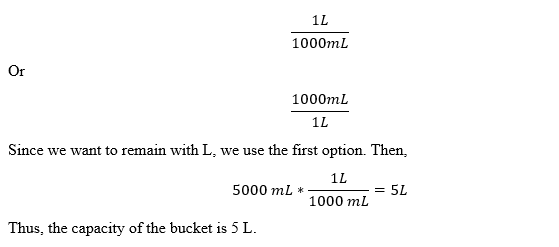Which of the following is the length of the unknown leg of a right triangle that has one leg length of 13 feet and a hypotenuse of 25 feet? (Round to the nearest tenth.)
32 feet
8 feet
21.4 feet
24 feet
Correct Answer : C
From the given data, we can draw the following triangle by letting the unknown length to be p.

We apply the Pythagoras theorem, the value of p:

The unknown length of the triangle is about 21.4 feet.
TEAS 7 Exam Quiz Bank
HESI A2 Exam Quiz Bank
Find More Questions 📚
Teas 7 Questions: We got the latest updated TEAS 7 questions
100% Money Refund: 100% money back guarantee if you take our full
assessment pass with 80% and fail the actual exam.
Live Tutoring: Fully customized live tutoring lessons.
Guaranteed A Grade: All students who use our services pass with 90%
guarantee.
Related Questions
Correct Answer is C
Explanation
A whole pizza represents 1, and two friends eat ¼ of the pizza. The remaining fraction of pizza is:
Remaining amount = 
Thus, 3/4 of pizza is left for three friends to share equally.
Now, the other three friends will each get

So, the other three friends will each get 1/4 of the pizza.
Correct Answer is D
Explanation
In order for the teacher to better visualize the test performance for his class, he needs to present the mark distribution in chart form. A better chart visualizer is the histogram, which will show the frequency of marks against range of test scores. A bar graph will not be used because the rectangles need to touch one another.
In a bar graph, the rectangles do not touch each other. Therefore, it will not be a good chart visualizer.
Correct Answer is B
Explanation
To change between L and mL, the following two options are used.

Correct Answer is D
Explanation
We are required to find the percent equivalent of the given fraction.
We multiply 7/8 by 100 to convert it to percent. You convert fraction to percent.

Thus 7/8 is equal to 87.5%.
Correct Answer is D
Explanation
From the cost of 45 syringes, we are required to find the cost of 5 syringes. We set up a proportion equation by letting the cost of 5 syringes to y. Besides, we let the cost to be numerator and number of syringes to be denominator as follows.

Solve the value of y by cross products


Divide both sides by 45


Therefore, 5 syringes will cost $80.00.
Correct Answer is A
Explanation
We analyze the given statement with the graph given as follows:
For option a: the points per game decreased five times between 1996 and 2015. So, the statement is true.
For option b: the lowest points scored per game was in 1998-99 season. So, the statement is false.
For option c: 2008-09 was the season the chargers scored the greatest number of points per game and not 2002-03 as claimed in the statement. So, this statement is not true.
Correct Answer is C
Explanation
In this problem, we need to find the amount of gratuity the couple will leave. The gratuity is 16% of the total bill. Before solving the problem, the following are terms and their meaning in percent problems:
- Is means equals
- Of means multiply
- What means unknown (variable)
If we let x be the amount of gratuity, then translating the given problem into a mathematical equation becomes:

Now we evaluate the above equation noting that of means multiply.

So, the value of x=9.376 and to the nearest cent, x=9.38
There, a couple will leave a gratuity of $9.38.
Correct Answer is D
Explanation
We use the order of operation to solve for the unknown value of x.
3(3x+3)=8x+5
Multiply 3 with each number in the brackets
(3*3x)+(3*3)=8x+5
9x+9=8x+5
Subtract 9 from both sides
9x+9-9=8x+5-9
9x=8x-4
Subtract 8x on both sides
9x-8x=8x-8x-4
x=-4
Thus, the unknown value of x is -4.
Correct Answer is D
Explanation
We two conversions when asked to convert between kg and lb

And

We need kg equivalent of 220 lb, therefore we use option 1 and carry out the conversions as follows:

Thus, 100kg is equal to 220lb.
Correct Answer is D
Explanation
We use 1 L =1000 mL to convert between the two units. The conversion options of interconversions are:

And

We want millimeters, use the second option to change L to mL as:

Therefore, 2.5 L is equivalent to 2500 mL.
This question was extracted from the actual TEAS Exam. Ace your TEAS exam with the actual TEAS 7 questions, Start your journey with us today
Visit Naxlex, the Most Trusted TEAS TEST Platform With Guaranteed Pass of 90%.
Money back guarantee if you use our service and fail the actual exam. Option of personalised live tutor on your area of weakness.
